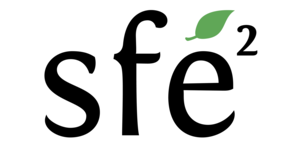(English version)
SUPERVISION :
– DOLLION Alexis, On-contract lecturer, UMR 6552 ETHOS, Université de Rennes alexis.dollion@univ-rennes.fr
En collaboration avec MCGRAW Kevin, Full time professor, Michigan State University (MC, USA)
INTERNSHIP PERIOD : 2months during the period from mid-Jan to mid-May 2025
STUDENT PROFIL :
– Master student in ethology, ecology or related
– Genuine interest in animal behavior and animal coloration
– Attention to detail, analytical thinking, and a passion for understanding animal communication are essential
CONTEXT :
This internship is part of a larger research project led by Dr. Alexis Y. Dollion and Dr. Kevin J. McGraw and ran back in 2021-2023, aimed at expanding our understanding of communication via dynamic color changes in birds. Traditional research in avian communication has focused predominantly on vocalizations and feather displays, with less emphasis on bare-part coloration—particularly rapid color changes in skin exposed during social interactions. Recent studies have begun to explore rapid color change in a variety of taxa, including crustaceans, fish, arachnids, insects, mollusks, amphibians, and reptiles, yet this phenomenon remains understudied in birds.
Wild turkeys (Meleagris gallopavo), in particular, exhibit remarkable shifts in head color—fluctuating between blue, white, and red—that are thought to serve a role in social interactions. This ability, similar to color changes observed in other species like the crested caracara and lappet-faced vulture, may allow for real-time signaling that conveys information on dominance, submission, or other social states during encounters. This project will investigate whether these color shifts in turkeys act as dominance or submission signals during agonistic (conflict-related) interactions.
APPROACHES :
-Image and Video Analysis: Using footage collected in 2023 from fieldwork in Arizona, USA, the intern will conduct quantitative analyses on images and videos to measure color dynamics during social interactions.
-Behavioral Scoring and Analysis: Alongside color measurements, the intern will record and classify types of interactions (e.g., displays of aggression, submission gestures) to establish behavioral contexts for color shifts.
-Data Management and Statistical Analysis: The intern will organize and analyze collected data, using statistical techniques to explore associations between color shifts and social hierarchy indicators. Experience with R software, ImageJ (or in java coding), BORIS or video edition software is a plus, though training will be provided.
LOCATION
The internship will take place in Université de Rennes (campus beaulieu) in the UMR 6552: Laboratoire d’éthologie animale et humaine (Rennes, Université de Rennes). EthoS is a mixed Universities of Rennes 1 and Caen – CNRS (National Scientific Research Committee Section 27) research unit. This unit is located at four sites: Beaulieu University Campus in Rennes, the Biological Field Station at Paimpont (Brittany, Ille-et-Vilaine, approximately 50 km from Rennes), Jules Horowitz Campus 5 in Caen and the Research center in coastal environment (CREC) in Luc sur Mer (approximately 20 km from Caen).
Our research unit has a long history of expertise in the study of animal (since the 50’s) and human (since the 70’s) behaviour and has progressively increased its size and national as well as international reputation over the years.
Indeed, EthoS is one of the largest research units focusing its research entirely on ethology with a broad expertise of animal models ranging from invertebrates to humans. EthoS is well known in particular for its important contributions to current international scientific debates on epigenesis, origin of language, brain plasticity and welfare measures
Alexis Dollion, an on-contract lecturer, will be the main supervisor. His research focusing on the use of coloration in animal communication and mostly rapid color change.
BIBLIOGRAPHY
(Laruelle, Beumont, & Legait, 1951; Buchholz, 1996, 1997; Prum et al., 1999; Prum & Torres, 2003; Buchwalder & Huber-Eicher, 2003; Negro et al., 2006; Stuart-Fox & Moussalli, 2009; Bamford, Monadjem, & Hardy, 2010; Umbers et al., 2014; Ligon & McCartney, 2016; Dollion et al., 2022)
Bamford AJ, Monadjem A & Hardy ICW. 2010. Associations of Avian Facial Flushing and Skin Colouration with Agonistic Interaction Outcomes: Avian Facial Flushing and Agonistic Interactions. Ethology 116: 1163–1170.
Buchholz R. 1996. Thermoregulatory Role of the Unfeathered Head and Neck in Male Wild Turkeys. The Auk 113: 310–318.
Buchholz R. 1997. Male Dominance and Variation in Fleshy Head Ornamentation in Wild Turkeys. Journal of Avian Biology 28: 223.
Buchwalder T & Huber-Eicher B. 2003. A brief report on aggressive interactions within and between groups of domestic turkeys (Meleagris gallopavo). Applied Animal Behaviour Science 84: 75–80.
Dollion AY, Meylan S, Marquis O, Leroux-Coyau M & Herrel A. 2022. Do male panther chameleons use different aspects of color change to settle disputes? The Science of Nature 109: 13.
Laruelle L, Beumont M & Legait E. 1951. Recherches sur le mécanisme des changements de couleur des caroncules vasculaires du dindon (Meleagris gallopavo L.). Arch Anat Microsc Morphol Exp 40: 91–113.
Ligon RA & McCartney KL. 2016. Biochemical regulation of pigment motility in vertebrate chromatophores: a review of physiological color change mechanisms. Current Zoology 62: 237–252.
Negro JJ, Sarasola JH, Fariñas F & Zorrilla I. 2006. Function and occurrence of facial flushing in birds. Comparative Biochemistry and Physiology Part A: Molecular & Integrative Physiology 143: 78–84.
Prum RO, Torres R, Kovach C, Williamson S & Goodman SM. 1999. Coherent light scattering by nanostructured collagen arrays in the caruncles of the malagasy asities (Eurylaimidae: aves). Journal of Experimental Biology 202: 3507–3522.
Prum RO & Torres R. 2003. Structural colouration of avian skin: convergent evolution of coherently scattering dermal collagen arrays. Journal of Experimental Biology 206: 2409–2429.
Stuart-Fox D & Moussalli A. 2009. Camouflage, communication and thermoregulation: lessons from colour changing organisms. Philosophical Transactions of the Royal Society B: Biological Sciences 364: 463–470.
Umbers KDL, Fabricant SA, Gawryszewski FM, Seago AE & Herberstein ME. 2014. Reversible colour change in A rthropoda. Biological Reviews 89: 820–848.

Commentaires récents